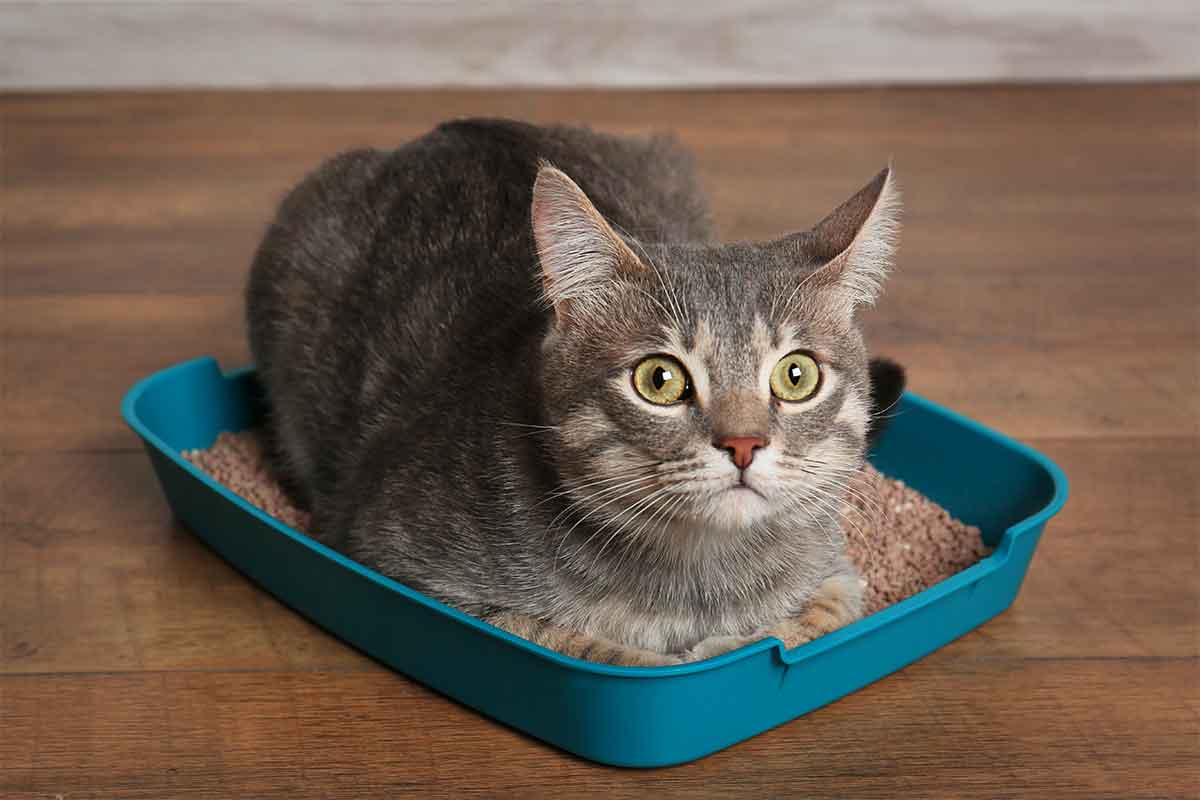My dynamic feline duo express their personalities in everything they do, including litter box practices. Ivan hums while he fervently excavates the depths of the box. Natasha “aims high,” plus she engages in bouts of what I call “litter boxing”— she scratches the sides of the litter box, wall, mat, floor and occasionally the mirrored door in another room, everything except the litter! Large, high-sided boxes ensure litter box bliss for all of us.
Litter boxes offer a convenient answer to nature’s call, yet house-soiling is one of the most common reasons cats lose their homes or are abused. Most often it’s the human element at fault. Learning the basics of litter box behavior helps minimize litter box stress and maximize litter box success.
Basic Instinct
Outdoors, cats bury their waste in loose, soft dirt or sand. This is more than a fastidious toilet habit; it’s an innate survival skill inherited from their wild ancestors. The behavior may serve two purposes: protection from predators and territorial marking.
Cats aren’t only predators, they’re also prey for larger animals. The ancestors of domestic cats may have learned to cover their waste and scent to avoid being attacked or eaten by predators.
Large wild cats belonging to the Panthera genus, including lions, tigers, and leopards, leave their waste exposed when competing for territory. Urine and feces contain scent markers called pheromones unique to each individual. X marks the spot, advising others the area is taken.
At approximately four weeks of age, kittens instinctively scratch in sand, and nature takes its course. Mom cats teach the finer points of litter box etiquette, which is one reason kittens should stay with their mothers until they are 12 to 14 weeks old.
Optimal Litter Box Plan
The ideal litter box is clean and large, filled with fine-grained litter in a room that offers the cat security from potential attack while in a vulnerable position. Fearful cats who must dodge the dog, another cat, or other scary obstacles to reach a box won’t swallow their fear, they’ll find a safer place to go. Locate the box away from your cat’s food and water. No cat wants to eat and drink in the same place he pees and poops.
Most cats prefer unscented clumping litter because the small grains feel more like soft, natural sand under their paws. A variety of materials are used for clumping litter. Offer your cat a cafeteria of litters so he can choose the one he prefers in terms of material, smell, and feel.
Litter depth is important, too. Individual preferences vary, but most cats like a depth of three to five inches, which allows them to dig.
Cats need ample room to scratch, turn, and squat. A simple, large, open plastic box that’s one and a half times longer than your cat from nose to tail tip meets the requirements. Avoid covers because they obstruct the cat’s view of a secure escape route, making them feel trapped and unable to safely flee. Otherwise, they’ll search for a less stressful setting.
Numerous litter boxes expand your cat’s territory. The rule is one box per cat and one for the house. Place boxes in different rooms; otherwise, closely placed boxes look like one giant box to your cat. Kittens and seniors don’t always remember where the lone box is, or they’re too far away to reach it in time.
Cats prefer clean latrines—who doesn’t? Outdoors, cats have several spots for business. If one spot’s dirty, they’ll look for a clean spot. Indoors, that spot may be behind your couch, so be scrupulous about cleaning. Scoop boxes twice a day, remove solid waste ASAP. Wash the box weekly with hot, soapy water. Avoid strong smelling cleaners or overly fragrant soaps as the smell may be overwhelming to your cat and make the box aversive.
Why, Kitty, Why?
If your cat suddenly stops using the litter box, house soiling isn’t the problem, it’s the sign of a problem. First priority is a vet visit to rule out a number of medical conditions. For a healthy cat, re-evaluate the litter box environment and make necessary adjustments.
Litter box behavior is an instinctual behavior, a survival skill, inherited from ancestral felines. Recognizing the natural behavior, individual variations, and providing stations that offer a clean, appropriate substrate in a secure, quiet location delivers litter box purrvana.
This article was reviewed/edited by board-certified veterinary behaviorist Dr. Kenneth Martin and/or veterinary technician specialist in behavior Debbie Martin, LVT








